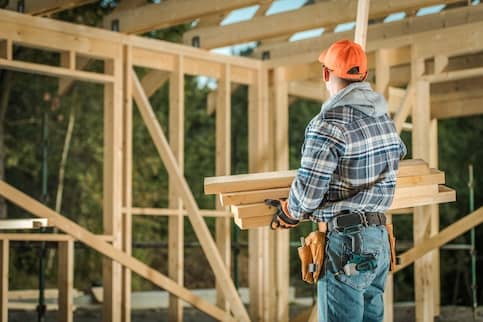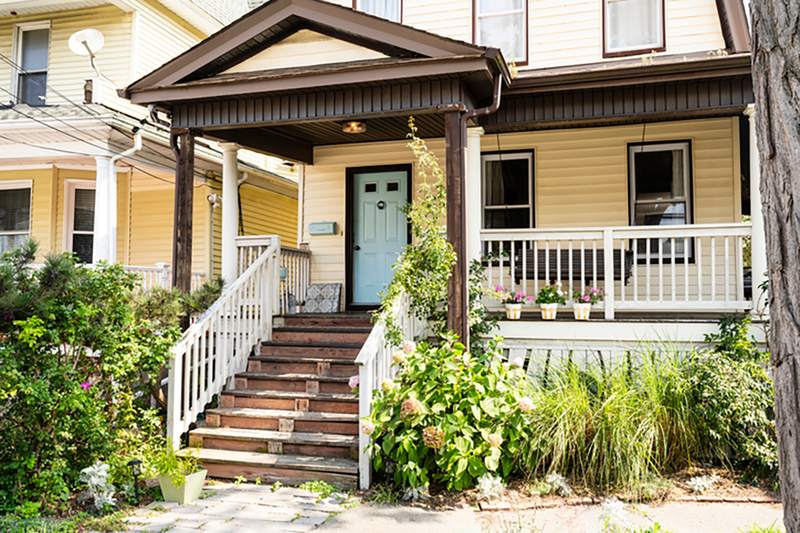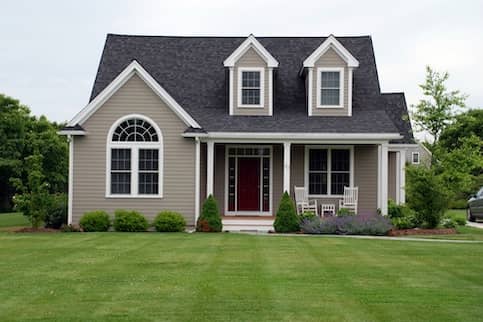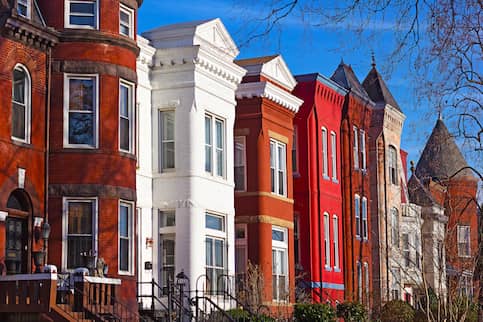Did you know renting is for more than apartments? With recent increases in home prices and rampant inflation, homeownership has become more difficult for a larger portion of the demographic that would have become fresh homeowners in previous generations. As a result, renting may be more realistic than buying, meaning a flood of tenants is hitting the market. This dynamic is an opportunity for real estate investors who own build-to-rent homes.
Build-to-rent homes meet this need by providing high-quality homes for young professionals and new families. For this reason, they are an ideal investment for those interested in the real estate market. Here are the details.
What Is Build-To-Rent?
Build-to-rent refers to houses that investors rent out instead of selling. These homes offer numerous amenities that homeowners usually enjoy, such as spacious lots and access to quality schools and entertainment.
Build-to-rent is an excellent way to start investing in real estate because homes are in high demand. In addition, millennials who are dealing with student debt and inflation may not be able to afford to buy a home. Instead, they rent out build-to-rent houses that create the homeownership experience without taking on a mortgage.
As a result, build-to-rent houses can provide reliable monthly rental income for investors because those attracted to this type of home tend to be young parents looking for stability and individuals who are on the younger side but well-established in their careers. So, tenants are willing and able to pay premium prices for their home.
See What You Qualify For
Buy A Home
Discover mortgage options that fit your unique financial needs.

Refinance
Refinance your mortgage to have more money for what matters.
Tap Into Equity
Use your home’s equity and unlock cash to achieve your goals.
Types Of Build-To-Rent Homes
Here are the different build-to-rent home structures:
- Single-family home: A single-family home is a house sitting on its own land and is suited for an individual or single family to occupy. The house doesn’t connect to any other structure and only has one full kitchen.
- Duplex: A duplex is a building on a single plot and contains two separate living units with their own entrances. Duplexes have a shared floor or wall running throughout the two units, making them desirable for large families wanting to live near each other.
- Townhome: A townhome is a single-family home with two floors and a shared wall with another house. It differs from duplexes and row homes because each unit has an individual owner, and the buildings have various designs.
- Row home: Row homes are single-family homes standing in line with each other. Each row home shares a wall with the houses next to it and usually has more square footage than an apartment.
- Small-lot home: A small-lot home is a single-family home sitting on a lot that is several hundred square feet instead of several thousand.
Upsides Of Investing In Build-To-Rent Communities
Investing in build-to-rent homes means enjoying the following benefits:
- Higher rents: Because build-to-rent communities are new construction with upgraded appliances, investors can charge higher rents. In addition, rent prices are rising almost as quickly as home prices, meaning higher returns for build-to-rent investors. For instance, HouseCanary reported the median national single-family home rental price at the end of 2022 to be over $2,300 per month.
- Lower turnover: Build-to-rent homes provide tenants more space than an apartment complex. As a result, tenants usually stay longer, especially if they can’t afford a home.
- Faster timelines: Submitting a rental application for approval takes less time than closing on a home. Because mortgage underwriting isn’t part of the process, units and communities fill up quickly, fast-tracking your investment income.
- New construction: Build-to-rent homes are new buildings that shouldn’t need as much maintenance initially, potentially leading to better cash flow. The fewer repairs you perform, the more rental income you keep.
Downsides Of Investing In Build-To-Rent Communities
However, there are drawbacks to investing in build-to-rent houses, including:
- Corporate competition: Giant corporations invest in build-to-rent communities at scale, meaning they manage dozens or hundreds of units. On the other hand, managing more than a few units may be beyond the capacity of an individual investor. So, you’ll need to hire a rental management company if you want to scale – and if you do, you might run into companies looking to snap up new investment properties for themselves.
- Lack of liquidity: Real estate isn’t a liquid asset. So, if cash is your goal or if you become strapped in the future, build-to-rent may not be ideal because it can be challenging to sell the property quickly. Instead, you’re looking at a modest, steady cash flow from rental income.
- Management of property: Property management is an extra (and sometimes necessary) expense, especially if you have multiple properties. The related fees can erode your gains, and it might take time to find the right property management company.
- Housing market variables: While home prices generally appreciate over time, the value of an investment is at the mercy of the housing market. So, a market downturn could create financial stress if you want to sell your properties.
Should You Invest In A Build-To-Rent Home?
Investing in a build-to-rent home means sinking a hefty amount of cash into the endeavor. Research and planning are crucial to making the investment pay off. Therefore, it’s recommended to do your homework on your local real estate market to locate the ideal properties and neighborhoods nearby.
In addition, you’ll need the necessary cash and financing. If you plan on financing the properties, it’s key to remember that lenders require a higher down payment for houses that aren’t your primary residence. Specifically, you’ll need at least 15% for a down payment. This figure means that a $200,000 home will cost $30,000 up front plus closing costs.
Therefore, it’s best to do your due diligence to predict a good return on investment (ROI) before investing. That said, when done with care, investing in real estate is an excellent way to diversify your portfolio. So, if you want a reliable income stream and aren’t concerned about liquidity, build-to-rent homes are among the top options. Plus, you’ll build equity as time goes on, giving yourself the ability to sell in the future.
Alternative Real Estate Investments
Fortunately, build-to-rent isn’t the only way to invest in real estate. These options provide different ways of investing in land and property:
Commercial Real Estate
Commercial real estate refers to multifamily living spaces and buildings used for business purposes. So, if you want to own multiple living units in one building (as opposed to build-to-rent, which usually are single units) or collect rent from business owners, commercial real estate may be a better fit.
Raw Land
Undeveloped land has no buildings, utilities, or roads. So, buying raw land means investing in its potential. For example, buying land in a developing area can mean holding a key location for new homes or businesses, making it extremely valuable in the future. In addition, raw land usually incurs lower management costs.
However, raw land isn’t necessarily a slam-dunk investment. For instance, municipal zoning laws and permitting costs can impede development, meaning the land could sit for years or decades without the possibility of building.
Real Estate Investment Trusts (REITs)
A real estate investment trust (REIT) is a company that invests in a real estate portfolio. You can purchase shares in a REIT as you would buy stock in a company or shares in a mutual fund.
Specifically, REITs invest in mortgages, commercial real estate, and rental properties. So, you can pick a REIT that invests in the real estate type that appeals to you. These features allow you to put money into different sectors in the real estate market without owning physical property and invest with more liquidity.
Next Steps For Investing In A Build-To-Rent Home
If you’re interested in pursuing a build-to-rent property, here are the steps to take:
- Secure funds. Funding your investment means buying the property outright or having the financial footing to secure financing. Remember, getting approval from a lender means showing the ability to make a sizeable down payment and afford the closing costs. As a result, you may need to take time to build up savings and strengthen your credit.
- Do the math. Next, calculate what you can spend versus what you need to earn back in rent to turn a profit. For example, say you get a loan to purchase a $300,000 home and have a $1,800 monthly payment plus $100 of monthly management costs. So, you’ll need over $1,900 of rental income just to cover your expenses.
- Choose a market. The most beautiful, spacious home in the world won’t generate a nickel without a paying tenant. So, it’s critical to choose a market ripe for build-to-rent properties. Specifically, it’s best to target a region with budding professionals, young families, a booming job market, high property values, proximity to amenities and schools, and uncomplicated municipal construction codes.
- Find a developer. Property developers need buyers once construction is complete. So, connecting with a build-to-rent developer can streamline the process of acquiring an investment property of this type.
The Bottom Line: Build-To-Rent Homes Can Make Great Investments
Build-to-rent homes are lucrative real estate investments because they provide stable rental income from low-risk tenants. In addition, these homes appeal to those who want to own a home but can only afford rental prices. Therefore, constructing and purchasing build-to-rent homes in family-friendly neighborhoods and locations close to amenities can help you find tenants quickly.

Victoria Araj
Victoria Araj is a Staff Writer for Rocket Companies who has held roles in mortgage banking, public relations and more in her 15-plus years of experience. She has a bachelor’s degree in journalism with an emphasis in political science from Michigan State University, and a master’s degree in public administration from the University of Michigan.












